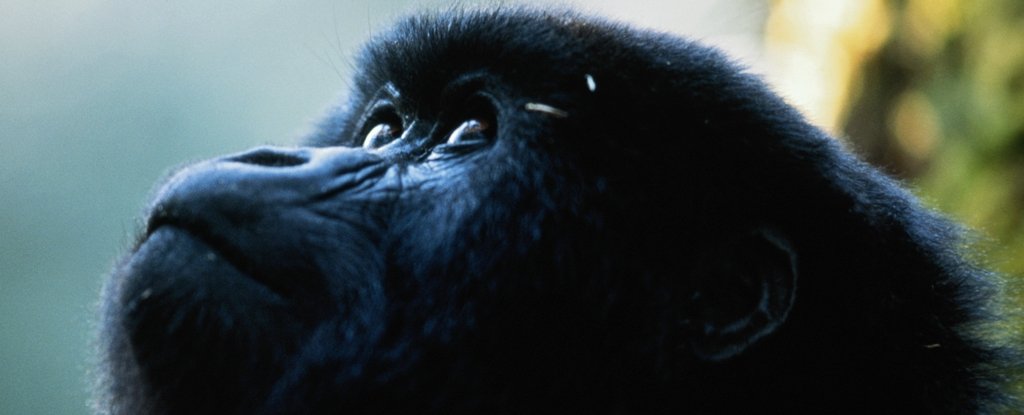Products You May Like
Humans are driving the extinction of our closest relatives on planet Earth, and if we don’t change our behavior, we may be the last great ape standing.
In the worst-case scenario, where human emissions and land use continue as usual, researchers predict a 94 percent loss of great ape habitat in Africa by 2050.
Even if we get our act together before then, reducing our fossil fuel emissions and keeping ecosystems protected, models show gorillas, chimpanzees, and bonobos will likely lose 85 percent of their range in Africa in the next three decades.
No matter which scenario ends up coming true, roughly half of all habitat loss could occur in protected areas, like national parks.
Climate change, after all, doesn’t adhere to human-constructed boundaries. As the world warms and landscapes shift, there’s always a chance great apes could flee to higher ground, but this takes time, and many species are slow to reproduce and require niche environments.
Such migration could also drive great apes out of protected areas, putting their populations at even greater risk. In fact, a series of new models estimates that future ranges for chimps, gorillas, and bonobos will shift mostly towards unprotected areas, which are subject to farming, mining, logging, hunting, and urban development.
The current predictions are based on the most comprehensive database for African ape populations to date. Using various climate forecasts, land use data, and projections of human population growth, researchers have shown just how imperiled these creatures truly are.
While there’s plenty of research to show how poorly great apes have been faring in recent decades, few studies have tried to predict what will happen to ape populations in the future.
In both Africa and Asia, great apes are all endangered, some critically so, and what’s left of their habitat is disappearing rapidly due to human disturbance.
At this point, even the best-case scenario is not looking great. The protected areas we have designated for great apes in Africa simply aren’t cutting it.
Going forward, models predict all great apes in Africa are likely to experience massive range losses, regardless of whether protected areas remain in place or not.
Currently, many African apes live outside of these boundaries, in areas that are particularly suitable for farming or oil palm concessions.
Three-quarters of all Grauer’s gorillas, for instance, live in unprotected areas, as well as 64 percent of mountain gorillas, 91 percent of Cross River gorillas, 80 percent of bonobos, 90 percent of Nigeria-Cameroon chimpanzees, 80 percent of eastern chimps, and 80 percent of central chimps.
As you would expect, these unprotected areas are also more vulnerable to human disturbance.
“The fact that the greatest range losses are expected to occur outside protected areas reflects the insufficiency of the current network of protected areas in Africa to preserve suitable habitats for great apes and effectively connect great ape populations,” says Joana Carvalho, who studies primate ecology and conservation at Liverpool John Moores University.
While climate change will no doubt make some habitats less attractive to great apes, it can also create new habitats. That said, it can take hundreds, even thousands of years, for great ape populations to disperse into new and suitable areas.
Thirty years is likely not enough. Given how quickly climate change is occurring, researchers think great apes will probably not be able to migrate to the extent that’s needed.
For many species, this could spell the end. If chimpanzees don’t shift their habitats, for instance, the new study suggests more than three-quarters of their range will be lost under future scenarios.
Mountain gorillas and Cross River gorillas, on the other hand, have virtually nowhere else to go. Even in the best-case scenario, current models found these two species of great ape are likely to experience complete loss of suitable habitat and no new suitable habitat.
“The global consumption of natural resources extracted from great ape ranges is one of the main causes of great ape decline,” says ecologist Hjalmar Kühl from the Max Planck Institute.
“All nations that benefit from these resources have a responsibility to ensure a better future for great apes, their habitats, as well as the people living in them by advancing a more sustainable economy.”
Great apes in Asia are also experiencing similar problems.
Since the 1990s, over 80 percent of orangutan habitat has been lost, and if we continue on the same track, some experts think these great apes could be extinct in a decade’s time.
“We can expect climate change to exacerbate range loss for African apes and consequently pose serious threats to species persistence, as they are anticipated to impact orangutans,” the authors of the new study write.
By the end of the century, there’s a very real chance humans will be the only great ape left.
The study was published in Diversity and Distributions.
